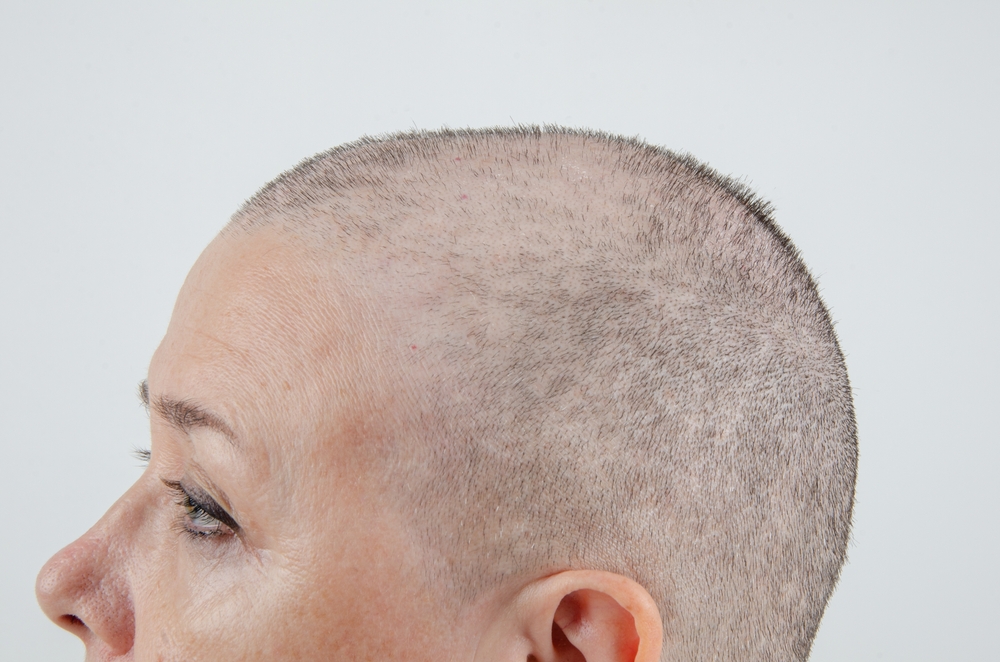When it comes to skin cancer, most people think of common areas like the face, arms, or legs. However, the scalp is also a vulnerable area that can be affected by various types of skin cancer. The skin on our heads is just as susceptible to harmful UV radiation from the sun, and it’s often overlooked in our sun protection efforts. In this blog, we’ll explore the types of skin cancer on the scalp, their symptoms, risk factors, and the importance of early detection.
What is Skin Cancer?
Skin cancer develops with the uncontrolled and abnormal multiplication of skin cells. This abnormal growth can result from damage to the DNA in skin cells, often due to exposure to UV radiation. There are three primary types of skin cancer: basal cell carcinoma, squamous cell carcinoma, and melanoma. Each type behaves differently, has distinct characteristics, and requires varying treatment approaches.
-
Basal Cell Carcinoma (BCC)
Basal cell carcinoma is the most common type of skin cancer, accounting for about 80% of all diagnosed cases. It typically develops in the basal cells, which are found in the lower layer of the epidermis. While BCC is generally slow-growing and rarely spreads to other parts of the body, it can cause significant local damage if left untreated.
On the scalp, BCC may present as a pearly or waxy bump, a flat, flesh-colored or brown scar-like lesion, or a bleeding or scabbing sore that doesn’t heal. These growths often appear in sun-exposed areas, including the scalp, making sun protection crucial.
Several factors can increase the likelihood of developing BCC. Prolonged exposure to UV rays from the sun or tanning beds is a significant risk factor. Additionally, individuals with lighter skin types are more prone to skin cancer. Age is another factor; the risk increases with age, particularly for those over 50. A family history of skin cancer can also elevate one’s risk.
If detected early, BCC is usually treatable. Common treatment methods include surgical excision, where the cancerous tissue is removed along with a margin of healthy skin. Mohs surgery, a specialized surgical technique that removes cancerous skin layer by layer, may also be employed. In some cases, topical medications in the form of creams or ointments can be effective for superficial BCCs.
-
Squamous Cell Carcinoma (SCC)
Squamous cell carcinoma is the second most common type of skin cancer, making up about 16% of skin cancer cases. It arises from squamous cells, which are found in the upper layer of the skin. Like BCC, SCC is often related to sun exposure but tends to be more aggressive.
SCC on the scalp may appear as a firm, red nodule, a flat sore with a scaly crust, or a new growth or a change in an existing wart or mole. These lesions can be painful and may bleed, signaling the need for immediate medical attention.
Similar to BCC, several risk factors can contribute to the development of SCC. Chronic sun exposure significantly increases the risk. Individuals with weakened immune systems, such as organ transplant recipients, are also at higher risk. Additionally, SCC is more common in older adults, particularly men. Exposure to carcinogens, such as certain chemicals like arsenic, can further elevate the risk.
SCC can be effectively treated if caught early. Common treatments include surgical excision, where the tumor and surrounding tissue are removed. Radiation therapy may be utilized when surgery is not an option or to treat larger lesions. In some cases, topical chemotherapy might be recommended for superficial SCC.
-
Melanoma
Melanoma is the most serious type of skin cancer, accounting for a smaller percentage of cases but causing the majority of skin cancer deaths. It originates in melanocytes, the cells that produce melanin. While melanoma can occur anywhere on the body, it can also develop on the scalp.
On the scalp, melanoma may present as a new mole or growth that changes in size, shape, or color. It can also appear as an existing mole that becomes irregular, multi-colored, or larger, or as itchy, painful, or bleeding areas. Melanomas often have an asymmetrical shape, irregular borders, and varying colors.
Several factors contribute to the risk of melanoma. Intense sun exposure is a significant risk, especially a history of severe sunburns, particularly in childhood. Individuals with fair skin and hair are more susceptible, as are those with a family history of melanoma. Furthermore, having atypical moles, known as dysplastic nevi, can increase the likelihood of developing melanoma.
The treatment for melanoma depends on its stage. Common treatments include surgical excision, where the melanoma and surrounding tissue are removed. Immunotherapy is another option that strengthens the body’s immune system to fight cancer cells. Targeted therapy may be employed to use medications that specifically target genetic mutations in melanoma cells. In advanced cases, chemotherapy may be recommended.
Importance of Early Detection
Early detection is crucial for all types of skin cancer, especially melanoma, which can spread rapidly. Regular self-examinations and professional skin checks can help catch abnormalities early. It is important to perform a self-examination in a well-lit area using a full-length mirror and a handheld mirror to inspect your scalp thoroughly. Parting your hair with a comb can help you examine your scalp effectively.
While examining, look for new moles, changes in existing moles, or any unusual growths. Keeping track of any changes over time, noting size, color, and shape, can also be beneficial. If you notice any new or changing moles, sores that don’t heal, or any growth that itches, bleeds, or causes pain, seek medical attention promptly. A dermatologist can perform a more thorough examination and may recommend a biopsy if necessary.
Protecting Your Scalp from Skin Cancer
Preventing skin cancer on the scalp involves taking proactive steps to protect your skin. Wearing broad-spectrum sunscreen with at least SPF 30 on your scalp and hairline, especially when spending time outdoors, is essential. Additionally, consider wearing a wide-brimmed hat to shield your scalp from direct sunlight. Limiting sun exposure, particularly during peak hours from 10 AM to 4 PM, can significantly reduce the risk of skin damage. It is also advisable to avoid tanning beds, as they can increase the risk of skin cancer. Taking these preventive measures can help protect your scalp and overall skin health.
Read Also: Potential Hazards of Infusion Therapy: What to Know
Conclusion
Skin cancer on the scalp is a serious concern that should not be overlooked. Understanding the types of skin cancer—basal cell carcinoma, squamous cell carcinoma, and melanoma—can help you recognize the signs and symptoms. Regular self-examinations, sun protection, and prompt medical attention are key to preventing and detecting skin cancer early. If you have concerns about your scalp or notice any unusual changes, visit the best primary care clinic near you.




